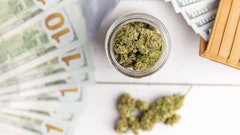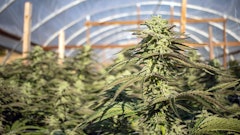
Denver approved the first social equity hospitality license for a cannabis consumption lounge, city officials announced March 21.
Tetra Lounge operated as a private social club during the past few years but closed down after a new licensing mandate went into effect last year, NBC-affiliate News 9 reported.
Tetra’s license approval this week—which now awaits the successful completion of required inspections before the business can start operating—comes nearly a year after city council members overhauled the local cannabis industry by passing two measures last April.
One of those measures set forth a path to license cannabis consumption facilities, such as bars and clubs, where customers could bring cannabis to consume, or the facilities could sell small amounts of cannabis for consumption. That measure also opened the door for the city to implement cannabis tour buses and shuttles.
RELATED: Cannabis Delivery Legislation Passed in Denver
Before that overhaul, Denver allowed people to use cannabis at private clubs without a licensing system. Now, the city requires establishments to acquire licenses to offer on-site consumption.
While the application process for cannabis hospitality establishments opened for social equity businesses in November, Tetra’s approval came Monday. The club’s owner, Dewayne Benjamin, told News 9 he hopes to open his facility’s consumption lounge before 4/20.
“Getting the license really gives us the foundation to grow and keep establishing new experiences within the cannabis hospitality realm,” Benjamin said. “There’s still a lot of financial aspects that kind of hinder a lot of businesses, but having the opportunity and the input into the industry I think is going to be very beneficial especially with new markets.”
The club will charge a $20 daily membership fee, $50 for a month or $350 for a year, according to News 9.
For the first six years of the city’s cannabis hospitality establishment program, only social equity applicants can apply for licenses, Denver’s Department of Excise and Licenses spokesperson Eric Escudero told The Denver Gazette.
“We want to achieve the full promise of legalization, and that in our mind is making sure there’s equitable access so more people can benefit economically—not just those who have financial advantage or advantage of connections,” he said.
In addition to Tetra, Denver has received two other social equity applications: one for another hospitality establishment and one for a hospitality/sales establishment, according to the Gazette.

























